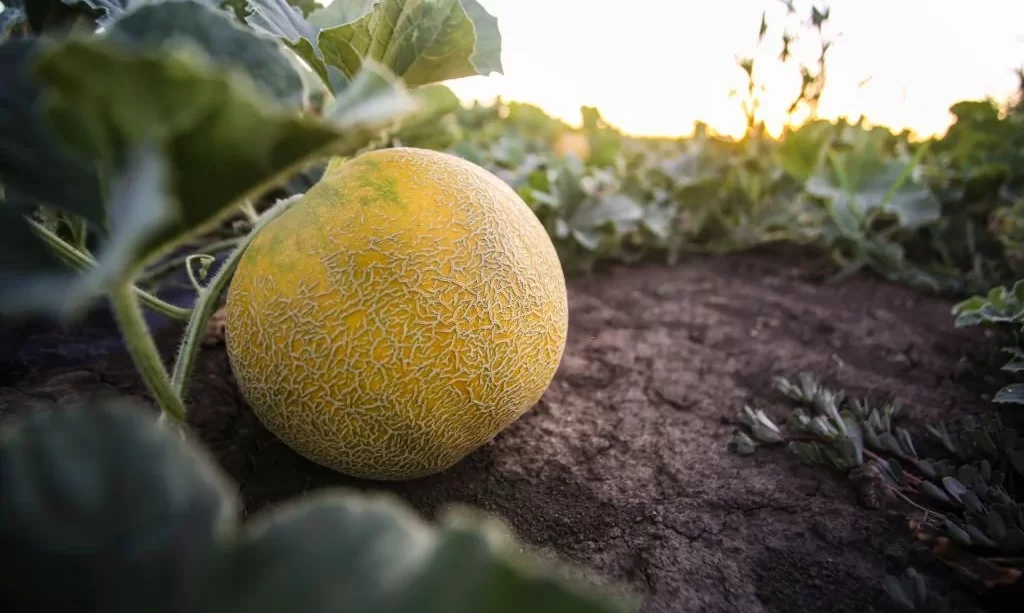Cantaloupes are delightful summertime treats, but nothing ruins a sunny day like biting into a bad one. In this guide, we’ll help you become a cantaloupe connoisseur by sharing some simple tricks to determine if your cantaloupe is past its prime.
- Name: Hales Best Jumbo Melon | Type: Heirloom
- Size at Maturity: Up to 5 Pounds | Days to Maturity: 90 Days
- Light Requirement: Full Sun | Planting Time: Warm Season
- Sowing Method: Direct Sow | Planting Depth: 1″ | Plant Spacing: 24″ – 36″
Check the Appearance
First impressions matter, and it’s no different with cantaloupes. Start your inspection by giving it a once-over. A fresh cantaloupe should have a lovely, uniform skin color without any soft spots, blemishes, or wrinkles. Let’s dive deeper into this visual clue to ensure you pick the best melon possible.
Smell it
Now, let’s put your nose to good use. Bring the cantaloupe up to your sniffer and take a whiff around the stem end. A ripe cantaloupe emits a sweet, fruity aroma that can make your mouth water. If it smells fresh and inviting, you’re on the right track. However, if you detect a sour or off-putting odor, it’s time to consider another melon option.
Feel the Texture
It’s time to get touchy-feely with your cantaloupe. Gently press your fingertips against the skin. A ripe cantaloupe should yield slightly under pressure, like a firm handshake. If it feels too mushy or overly soft, it’s probably overripe or spoiled. On the flip side, if it’s rock-hard, it needs more time to ripen. So, find that perfect balance for the ideal cantaloupe experience.
Inspect the Stem End
Let’s get to the nitty-gritty of cantaloupe assessment. Examine the area where the stem used to be. A green and fresh stem end is a good sign that your cantaloupe is still in the game. But if it’s brown, moldy, or looks like it’s seen better days, it’s waving the red flag of spoilage. This little detail can reveal a lot about your melon’s condition.
Listen to Your Gut
Sometimes, your instincts are your best guide. If, after all the checks, something just doesn’t sit right with you about the cantaloupe, trust your intuition. Your gut feeling is a valuable tool when it comes to deciding whether to enjoy or toss that melon. Better safe than sorry!
Conclusion
Becoming a cantaloupe aficionado doesn’t require a degree in fruitology. By mastering these simple techniques, you can confidently pick the juiciest, sweetest cantaloupes every time. Remember to check its appearance, savor its scent, feel its texture, inspect the stem end, and trust your gut. With these skills, you’ll be a pro at choosing the perfect cantaloupe and saying goodbye to the bad ones. Happy munching!




